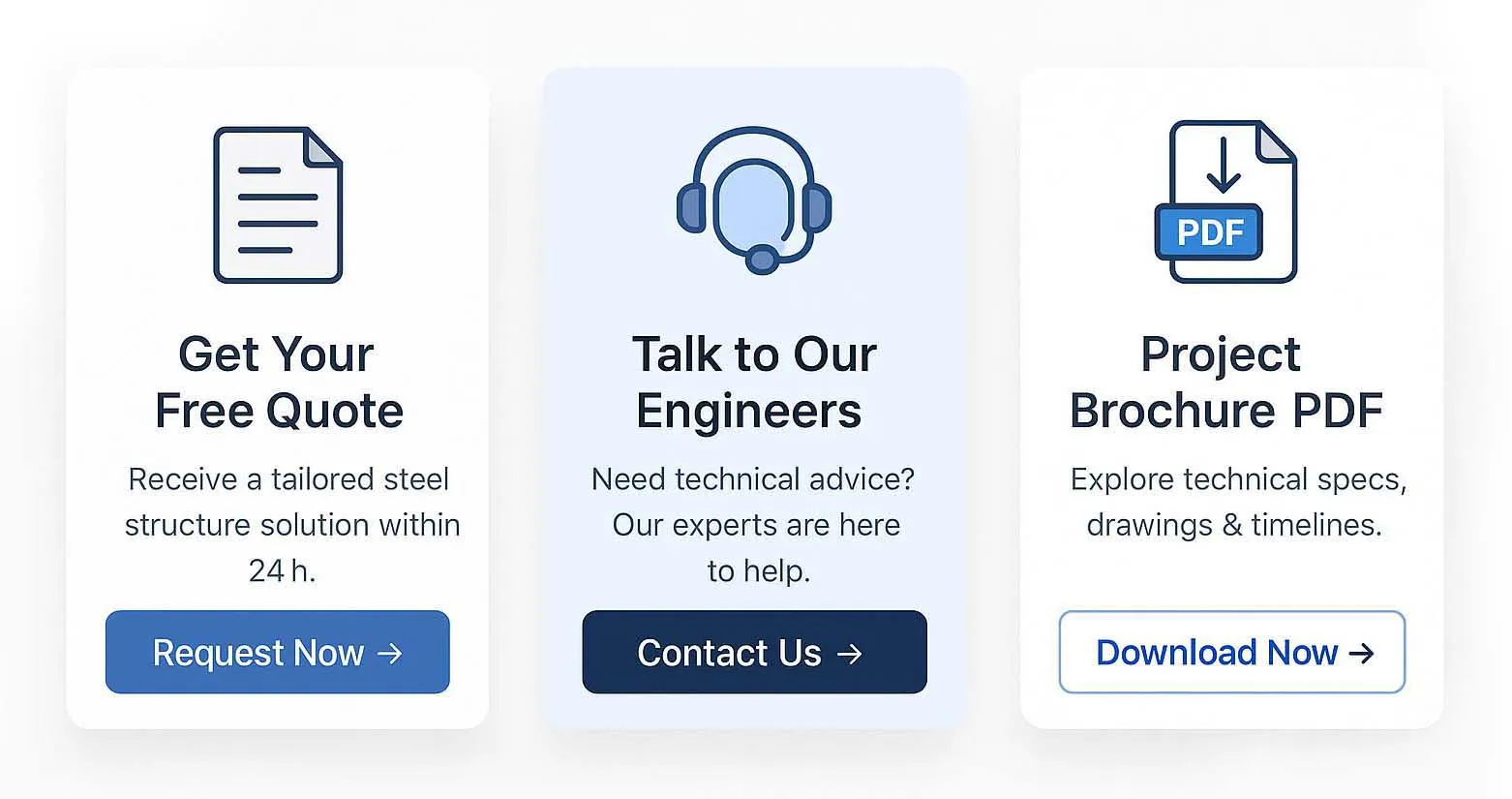Time:2025-08-23 06:27:55 Source:Sanjian Meichen Steel Structure
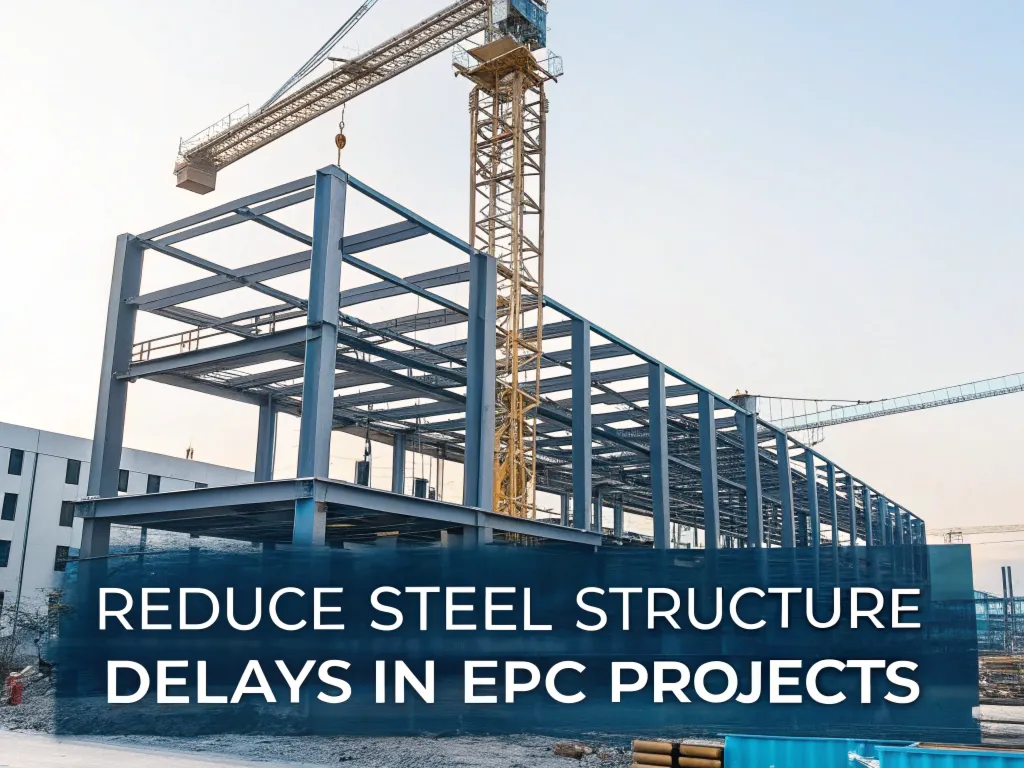
With 20+ years in steel structure fabrication, design, and installation, I’ve seen the same few issues derail most EPC projects. The root causes aren’t always hard to fix—they’re preventable with the right processes. This guide distills practical, battle-tested strategies I’ve used with major EPC clients to cut delays, protect margins, and keep construction moving smoothly.
About 70% of delays come from late or incomplete design drawings. If you don’t lock design responsibility and require Issued for Fabrication (IFF) drawings before procurement, your steel ends up waiting in the workshop for revisions.
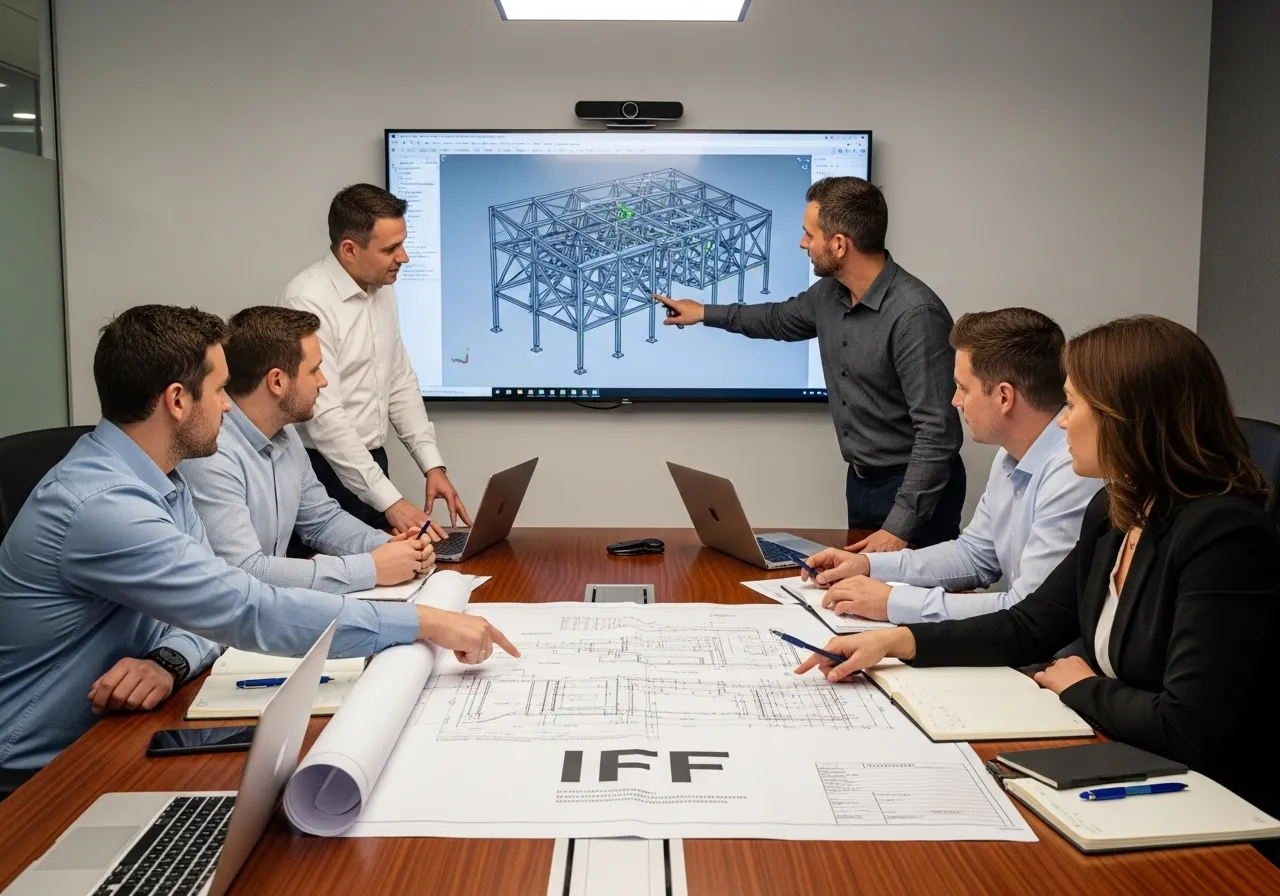
Define design ownership up front: pick one accountable party (architect/engineer or EPC prime) for all design outputs and change control.
Establish an IFF gate: no procurement or shop drawing release without an IFF package, including dimensional checks, weld maps, BOM, and fabrication notes.
Create a rapid design-change workflow: cap critical revision turnaround at 48–72 hours; set a standing change-control board for time-sensitive decisions.
Design for modularity and tolerance: embed bolt-hole patterns and tolerance allowances that accommodate field variance; standardize interfaces to minimize later rework.
Fewer last-minute drawing freezes and shop stoppages.
More predictable fabrication lead times.
Clear procurement sequencing and smoother logistics planning.
A supplier that slips 2–3 weeks can cost 10x more in liquidated damages, schedule slippage, and reputation damage. Many EPCs chase the lowest price; the smart choice is to evaluate capacity and capability, not just cost.
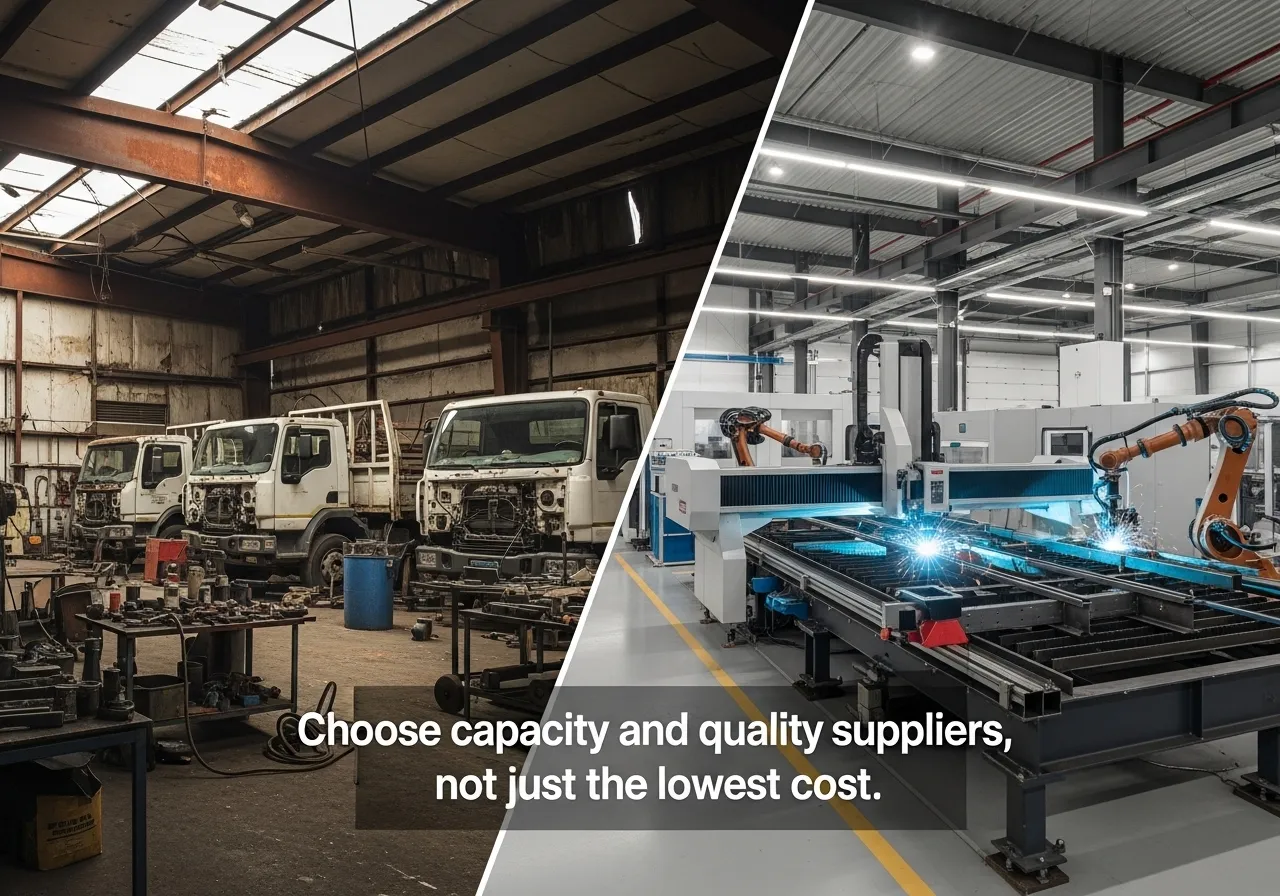
Capacity metrics: annual tonnage, CNC/laser capability, handling of large assemblies, and peak-season tolerances.
QA footprint: in-house NDT, QA/QC staffing, calibration programs, and full traceability documentation.
On-time delivery history: gather references and, if possible, site-installation overlap data.
Financial health and risk exposure: ensure the supplier can weather cash-flow demands without interrupting production.
Local logistics resilience: proximity to ports, rail access, and contingency plans for customs or transit delays.
Lower risk of multi-week fabrication delays and rework.
More reliable delivery windows aligned with site mobilization.
In heavy industrial projects, modular steel structures can cut site installation time by 20–30%. For example, a petrochemical frame project reduced crane days from 40 to 25 by modularizing large assemblies.
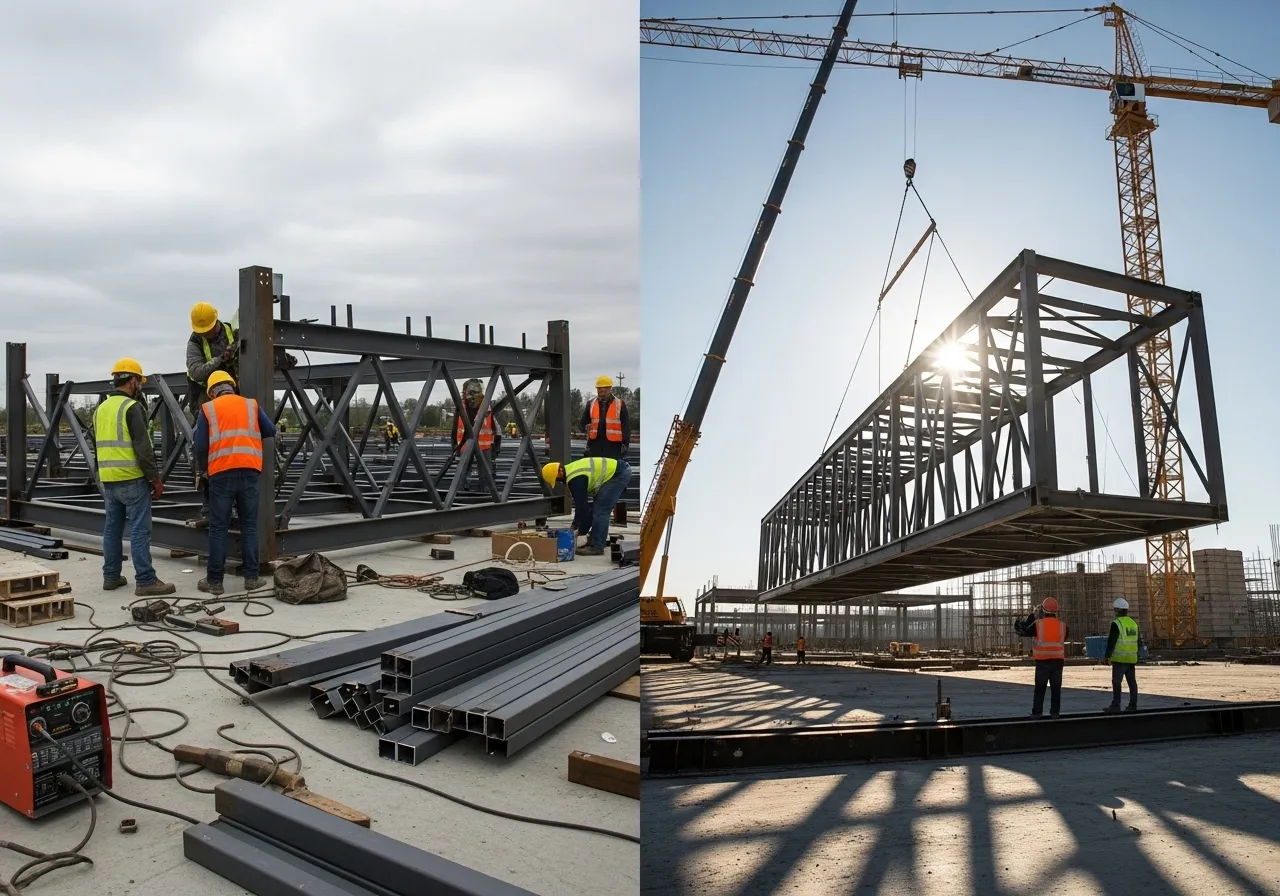
Identify modular candidates early: large frames, skid-mounted systems, and pre-wired/pre-piped subassemblies.
Design for modular transport: ensure module dimensions fit standard trucking/rail widths, provide clear lifting points, and minimize field cutting.
Preassemble where feasible: perform critical alignments and flange checks in the factory; ship modules with QA-documented tolerances.
Plan logistics and crane access: align module deliveries with the site crane schedule to avoid idle crane time.
Shorter field installation windows and fewer crane days.
Reduced exposure to weather-related delays.
Safer, more controlled heavy-lift operations.
Fabrication mistakes drive rework and site delays. My rule: insist on independent, third-party QC inspections inside the workshop, not just on site. Fixing a misaligned flange in the factory can take about 1 hour; the same issue on site can cost days.
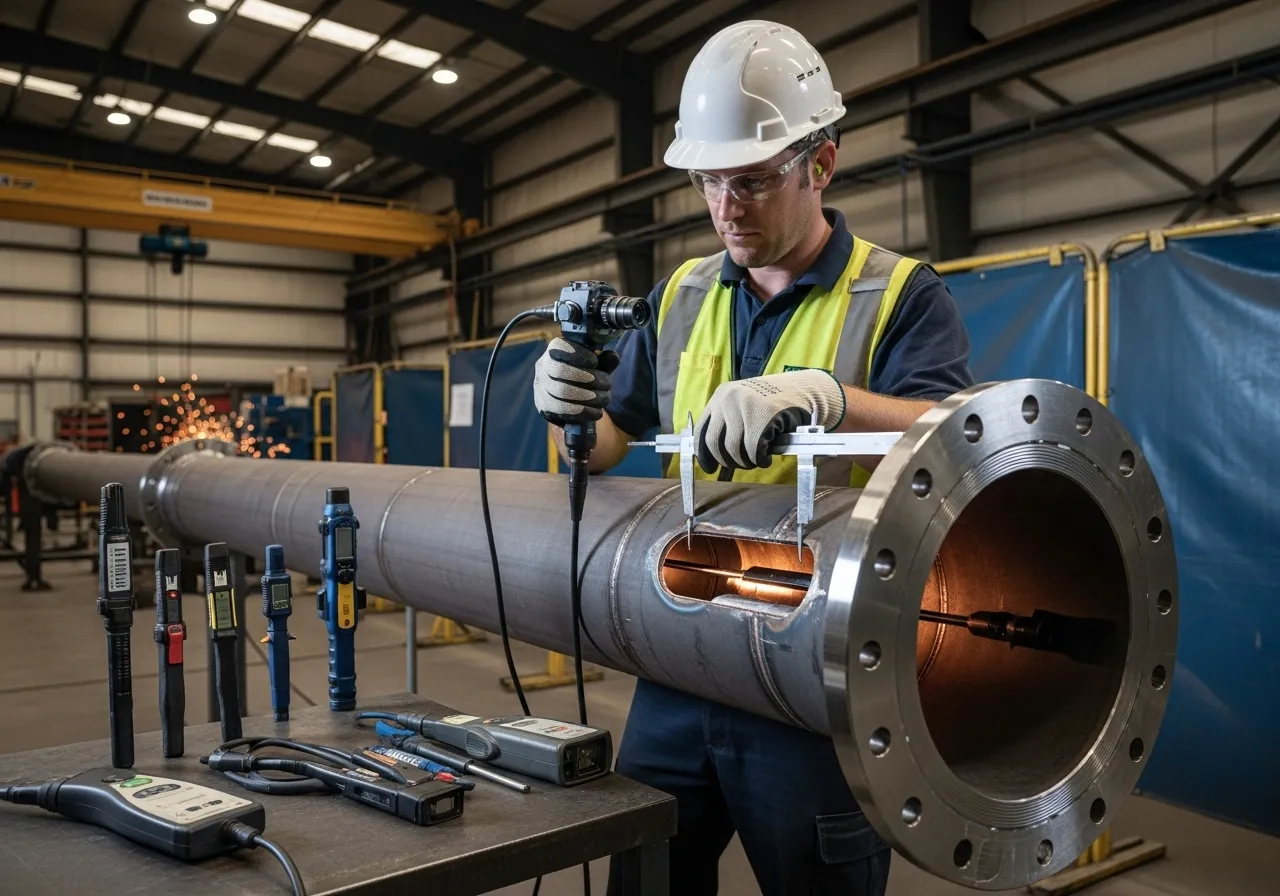
Require certified external QC inspectors for critical welds and flange fits before shipment.
Tie QC checks to a factory-quality checklist aligned with project specs (codes, tolerances, coatings).
Implement 100% Process Quality Inspection (PQI) on critical welds: preheating, weld inspection, straightness checks completed before load-out.
Maintain a non-conformance log with root-cause analysis and corrective action tracking.
Less field rework and fewer downstream delays.
Clear, auditable quality records support warranties and client confidence.
Overseas projects routinely underestimate customs clearance and local approvals. I’ve seen containers stuck for weeks because steel wasn’t labeled to EN/AISC standards. Early clearance planning matters.

Early export packing and labeling review: confirm EN/AISC labeling, certifications, and marking requirements are met.
Consolidated export package: assemble commercial invoices, mill certificates, material test reports, and traceability records in one ready-to-review bundle.
Local regulatory liaison: assign a PM or agent to handle permits, local approvals, and import duties to avoid bottlenecks.
Contingency staging: maintain a parallel shipment plan for critical components if one shipment stalls.
Faster port clearance and smoother site mobilization.
Fewer last-minute rushes and rework due to missing documentation.
A dashboard that links fabrication, logistics, and site progress gives you early visibility when installed tonnage lags fabrication.
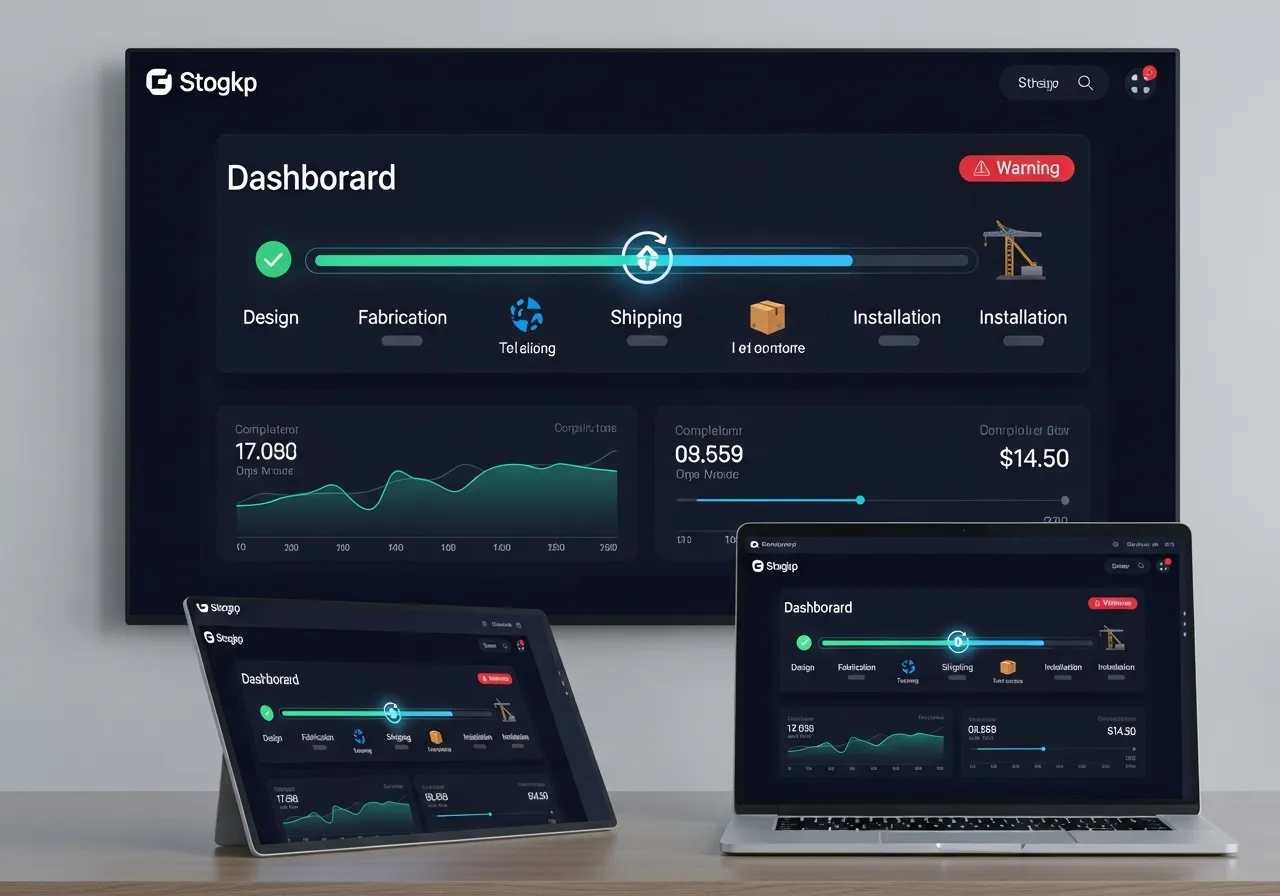
Real-time progress: fabrication vs. plan (tonnage and pieces).
Shipment tracking: packing dates, container IDs, port status.
Site progress: module delivery windows vs. actual installation.
Early-warning flags: crane availability, berth access, or upcoming fabrication bottlenecks.
Change-control log: design/engineering changes impacting fabrication.
Start simple: use a spreadsheet or cloud tool (Power BI, Google Data Studio) and evolve to an integrated ERP view.
Set triggers: if fabricated vs installed lags by a threshold (e.g., X% for Y days), initiate mitigation (lock design, escalate supplier, re-sequence modular work).
Involve cross-functional teams daily during critical phases (procurement, fabrication, logistics, site).
Challenge: Tight schedule with a 1,200-ton frame and crane-critical path.
Intervention: Early design-for-fabrication alignment; modularization of large frames; factory QC with third-party inspectors.
Result: Crane days dropped from 40 to 25; overall site installation shortened ~20–25%; no major design changes during procurement; IFF drawings locked before PO.
Lesson: Prioritize modular packages for the heaviest, most complex sections to unlock meaningful schedule relief.
Challenge: Large steel package shipped to a Middle East facility faced four-week customs hold due to labeling and certification gaps.
Intervention: Pre-shipment compliance review, EN/AISC labeling alignment, consolidated export package, and a local regulatory liaison.
Result: Customs clearance time cut to 1 week; schedule preserved; no rework due to mislabeled components.
Lesson: Don’t wait for customs to reveal gaps—close labeling and compliance upfront.
Challenge: Intermittent misalignment causing 2–3 days of field rework per joint across multiple modules.
Intervention: Introduced factory-based third-party QC for critical welds and flange fits; non-conformance logs with root-cause tracking.
Result: Field rework dropped ~60%; project schedule stabilized.
Lesson: Factory QC is a force multiplier for on-site reliability.
Define design ownership and IFF requirements in contracts.
Lock IFF packages before any procurement or production.
Implement a 48–72 hour change-control cycle for critical design changes.
Build a supplier scorecard focused on capacity, QA capability, on-time delivery, and financial health.
Require recent on-time performance references and a capacity validation for the current project.
Identify 20–40% of components as modular candidates based on weight, size, and crane access.
Design modules with standardized interfaces (bolt patterns, alignment pins) to ease assembly.
Use third-party QC inside the workshop for critical welds and fittings.
Maintain a non-conformance log with corrective actions and timelines.
Prepare export documentation early; verify EN/AISC labeling and mill certificates.
Assign a dedicated logistics liaison to handle permits, labeling, and port coordination.
Implement a steel delivery dashboard as a standard project tool.
Set escalation thresholds for fabrication-versus-installation gaps.
Q1: What is IFF and why does it matter for EPC steel projects?
A1: Issued for Fabrication (IFF) is the stage when drawings are finalized for fabrication. Releasing IFF drawings early prevents costly rework, streamlines procurement, and reduces shop delays.
Q2: How much can modularization actually save on project schedules?
A2: In heavy industrial projects, modularization can reduce site installation time by 20–30% and cut crane days, depending on module size and logistics.
Q3: Why insist on third-party QC inside the workshop?
A3: Factory QC catches misalignments or weld issues before shipping. Fixing issues in the factory is typically 1 hour vs days of field rework, preventing cascading delays.
Q4: What causes overseas delays to blow up?
A4: Customs clearance, labeling non-compliance, and local approvals are top culprits. Early handling of export packing, labeling, and regulatory checks minimizes delays.
Q5: What’s a steel delivery dashboard and how does it help?
A5: A dashboard links fabrication progress, logistics, and site installation. It provides early warnings if fabrication lags behind installation, enabling proactive mitigation.
Q6: How do I measure supplier risk beyond price?
A6: Evaluate capacity (tonnage/year, CNC capacity), QA resources, on-time delivery history, financial health, and proximity to logistics hubs.
